A descriptive and visual evolutionary journey from neanderthals to humans.
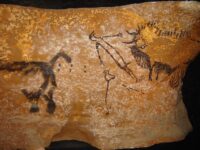
In 2018, the discovery of 64,000-year-old cave art in Spain attributed to Neanderthals challenged the bedrock of anthropological thought. This revelation forced a reevaluation of long-held assumptions and confronted the scientific community with its own anthropomorphic biases. For decades, Neanderthals had been cast in the role of the brutish, less intelligent cousins of modern humans (Homo sapiens), a narrative that simplified a complex evolutionary tale. Yet, evidence like this art suggests a cognitive depth and cultural richness previously unacknowledged. This article aims to delve into the burgeoning body of research that challenges these stereotypes, focusing on the cognitive abilities and cultural complexity of Neanderthals. Amidst this reassessment, a paradox emerges: Neanderthals had larger brains on average than modern humans, yet it was our lineage that ultimately prevailed. Adding to the intrigue is the debate over the Encephalization Quotient (EQ), where estimates place Neanderthals in a range of 3.3 to 4.4, suggesting a misalignment between brain size and attributed intelligence.
Neanderthal-Sapiens Connection
First, let’s discuss our connection to our closest cousins. While we did not evolve from Neanderthals, we did interbreed with them, especially along the Europe-Asia corridor, and with continued mixing, most humans today have between 1 and 2 percent of their DNA from this encounter. According to 23andMe.com, I have about 2% Neanderthal DNA. Out of the 2,872 variants they test, I have 289 of them. These traits trace back to the Neanderthals. Out of the 289, they’ve identified likely traits I have because of them. These traits are discovered through DNA testing and surveys. 23andMe uses surveys and studies to link specific DNA genomes to specific traits. For me, these include the possibility that I have a slightly worse sense of direction than most, perhaps I sweat a bit more than others during a workout, and I blush a bit more. Finally, my extreme fear of heights was likely passed to me from them. Thanks, Neanderthal ancestors!
To put this into perspective, humanity today has about 4, or maybe 5 million variants. These variants manifest as traits like hair, eye, and skin color, as well as conditions like glucose intolerance. These variants evolved from previous populations. For example, before about 20,000 years ago, all newborn humans tolerated milk well, but this tolerance faded into adulthood. When humans began domesticating animals around 20,000 years ago, we realized we could keep them alive and drink their milk, which provided many more meals than butchering them. While dairy products are very nutritious, most people at that time had trouble digesting them. About 7,000 to 10,000 years ago, some populations evolved better dairy tolerance in adults. This has been a desirable trait, and we are slowly evolving into a species that tolerates dairy products well throughout our entire lives.
Note: If you’re curious, we are born with bodies that produce the lactase enzyme to help process mother’s milk. This enzyme naturally dissipates as time goes on. Perhaps this was an evolutionary development to aid the weaning process, benefiting both the child and the mother.
A Neanderthal Overview
For a visual insight into this, check out The Human Evolution Timeline, and filter it to “genus Homo.” For now though, let me paint you a picture.
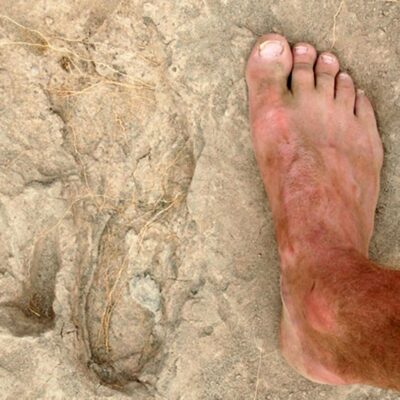
Neanderthals and humans share a common ancestor called Homo heidelbergensis. The story goes like this. About 1.9 million years ago, Homo erectus started walking the Earth with feet and a stride like ours. They made tools, and explored Africa, the Middle East, Europe, the Mediterranean, and Asia all the way through China. About 640,000 years ago, one of their family branches called Homo heidelbergensis evolved in Africa and could speak and communicate even better. This branch of the family occupied Africa along with other branches of the family and quickly spread to Europe and beyond. About 430,000 years ago, a branch of the family in Europe evolved into Neanderthals. Meanwhile, back in Africa, another branch of the Homo heidelbergensis family kept evolving. About 315,000 years ago that branch evolved into Homo sapiens.
We lived with the other branches of our family on Earth for many years. Although speculative, I imagine the total hominin population around this time was well above 2 million. Homo sapiens lived in Africa with Homo heidelbergensis for over 100,000 years until heidelbergensis went extinct. The original Homo erectus was still thriving and humans and them lived on Earth together for about 200,000 years! Homo erectus finally went extinct about 50,000 years ago.

While all these family branches looked more like humans than apes, my guess is that Homo erectus had a few more ape-like features and did not speak well. Current thoughts on why branches went extinct vary and are complicated. Although a bit speculative, my reading of the tea leaves is that part of the story might include Homo sapiens aggression. Research show that other family branches tended to die off soon after Homo sapiens arrived. Were we just better than them? Did we carry diseases? Are we more aggressive? These questions and whether Homo sapiens were smarter than all of them is still an ongoing debate. For example, it appears Neanderthals might have been smarter than humans. Were they also less hostile?

Weekly Wisdom Builder
Got 4 minutes a week?
A new 4-minute thought-provoking session lands here every Sunday at 3PM, emailed on Mondays, and shared throughout the week.
Exactly what the world needs RIGHT NOW!
Anyway, back to more solid ground.
Neanderthals, our closest extinct human relatives, were remarkable for their physical capabilities, which were well-adapted to the harsh environments of Ice Age Europe and Asia. Their robust physique, characterized by a broad chest and powerful limbs, was complemented by a brain size that, on average, exceeded that of today’s Homo sapiens. Spanning from approximately 430,000 years ago to 29,000 BCE, Neanderthals occupied a wide geographic range, from western Europe to the forests of Siberia. This period witnessed significant climatic fluctuations, which Neanderthals navigated with an adaptability that belies the crude caricatures often depicted in popular media.
Beyond Anthropomorphism
The endeavor to understand Neanderthals confronts a fundamental challenge: avoiding the trap of anthropomorphism. As we seek insights into their intelligence and way of life, the line between objective analysis and projecting modern human experiences onto these ancient relatives becomes perilously thin.
The Mirror of Our Minds
The risk of assuming Neanderthal intelligence and behaviors mirrored our own is significant. While it’s tempting to interpret their actions through the lens of modern human experience, such an approach can distort our understanding. The emphasis must remain firmly on the observable data — the fossils, the archaeological evidence, and the environmental contexts in which Neanderthals lived. These tangible pieces of the past offer the clearest window into the lives of Neanderthals, free from the bias of contemporary human thought.
Objective Analysis and the Challenge of Interpretation
Anthropomorphism, the tendency to attribute human characteristics to non-human entities, poses a significant risk in interpreting Neanderthal behaviors. While human-like traits in Neanderthals are undeniable, objective analysis requires a careful distinction between similarities born of shared ancestry and those arising from our own ingrained biases. This distinction is crucial in accurately reconstructing Neanderthal life, emphasizing behaviors and capabilities evidenced directly by archaeological findings.
Historical Portrayals and the Weight of Bias
The portrayal of Neanderthals has been deeply influenced by biases and assumptions throughout the history of their study. Early depictions often cast them as brutish and primitive, reflections more of the fears and prejudices of the time than of scientific evidence. As research progresses, these caricatures have given way to a more nuanced understanding, but the shadow of past biases lingers, reminding us of the importance of vigilance against unexamined assumptions.
Brain Size, Structure, and the Quest for Understanding
Ongoing research into the brain size and structure differences between Neanderthals and Homo sapiens continues to provide fascinating insights. These differences, while subtle, may hold clues to the unique cognitive worlds of Neanderthals — how they thought, communicated, and interacted with their environment. Yet, the quest to understand these differences underscores the broader challenge: appreciating the complexity of Neanderthal life without resorting to simplistic comparisons with our own.
The journey to understand Neanderthals is as much about confronting our own biases as it is about uncovering the past. By committing to an evidence-based approach and acknowledging the pitfalls of anthropomorphism, we can hope to paint a more accurate and respectful picture of these close relatives. In doing so, we not only honor their legacy but also enrich our understanding of the diverse tapestry of human evolution.
Neanderthals might not be a separate species
The debate over whether Neanderthals constitute a separate species from Homo sapiens is at the heart of one of the most fascinating scientific discussions of our time. Central to this debate is the evidence of interbreeding between Neanderthals and Homo sapiens, a fact that not only challenges traditional notions of species but also hints at the complex web of interactions that have shaped human evolution. The biological species concept, which hinges on reproductive isolation, seems at odds with the genetic reality that Neanderthals and early modern humans not only could but did interbreed, leaving a legacy in the DNA of contemporary populations outside Africa.
This intersection of genetics, anthropology, and evolutionary biology raises profound questions about what truly defines a species. The presence of Neanderthal DNA in modern humans — contributing to aspects of our health, adaptation, and genetic diversity — underscores the fluidity of species boundaries. Furthermore, the classification of Neanderthals as a separate species or a subspecies of Homo sapiens reflects broader challenges in applying rigid categories to the rich tapestry of human evolution. As research continues to reveal the intricacies of our genetic heritage, the distinctions between species, subspecies, and the concept of race as a social construct versus biological diversity become areas of critical examination and reevaluation. This ongoing debate not only enriches our understanding of human history but also challenges us to reconsider the very foundations of how we categorize the natural world.
Speciation in Action
The process by which new species arise is well-understood, the evidence compelling and conclusive, our knowledge complete. Speciation is the evolving of one species to another and we see it in the fossil record, we’re watching it live in nature, and we control it in the lab. We can read the fossil record like a book and on these pages we see changes gradually accumulate over millennia. Heck, humans have been pushing the process along for decades of millennia. Just look at dogs, cats, cabbage, strawberries, and corn as well as our main sources for protein: chickens and cows.
Speciation demonstrates nature’s capacity to diversify life through evolutionary mechanisms such as genetic mutation, natural selection, and geographic isolation. However, discussions about speciation inevitably bring us to the pivotal question: what exactly defines a species? The debate about what constitutes a species and subspecies in “Our Time” is nuanced and personal. Depending on what scholars decide, either Neanderthals were another species that we bred with, or they are us. Meaning the same species, but perhaps two subspecies.
Let’s define it and take a look use three case studies.
Species Defined
To discuss speciation effectively, we need a clear and precise definition of a species, a topic that remains a subject of intense debate among evolutionary biologists. For clarity in our discussion, let’s adopt a definition based on two essential criteria. First, two lifeforms are considered the same species if they are capable of interbreeding and producing fertile offspring regularly under natural conditions—not just when artificially altered by humans in the lab. This aspect emphasizes the importance of natural reproductive viability. Second, these lifeforms must have the same number of chromosomes, ensuring genetic consistency across generations. While modern techniques can sometimes bridge chromosomal gaps, those exceptions fall into the artificially altered by humans in the lab category. We’ll set aside this “humans playing god” category. Whether in the lab or in nature, offspring from individuals with different chromosome counts are classified as hybrids. While hybrids are indeed part of the natural evolutionary process, they represent a more complex “transitional” scenario and will be set aside as a special case in our discussion. This approach to defining species aligns with ongoing discourse among experts.
Humans have observed speciation in the fossil record and the lab, but to say this, we have to precisely define a species. In the context of evolution, the concept of a species can be complex and debated among scholars. For clarity, let’s define a species using two key criteria. First, two lifeforms must be capable of interbreeding and producing fertile offspring in their natural environment, not just in a laboratory setting. This doesn’t mean they must produce offspring every time, but rather that successful reproduction occurs regularly. Second, they must share the same number of chromosomes. While humans have developed techniques to overcome chromosomal differences in reproduction, this is not a natural process and doesn’t apply to our definition. Additionally, offspring resulting from the mating of lifeforms with different chromosome numbers are considered hybrids and don’t fit neatly into either species or subspecies categories. Yes, it’s true that offspring with a different number of chromosomes is a natural part of evolution, but for our purposes, we’ll set hybrids aside as a special case. A valid case, but more complex and a topic for another day. This definition aligns with current discussions among biologists and evolutionary scientists.
Case Study 1: Dogs
About 20 thousand BCE, humans domesticated the gray wolf. There are significant differences between dogs and wolves, and over time they evolved into man’s best friend: dogs. Dogs come in a much wider variety of sizes and shapes than wolves, and their behavior is more social and dependent on humans. While they are the same species, they are a subspecies.
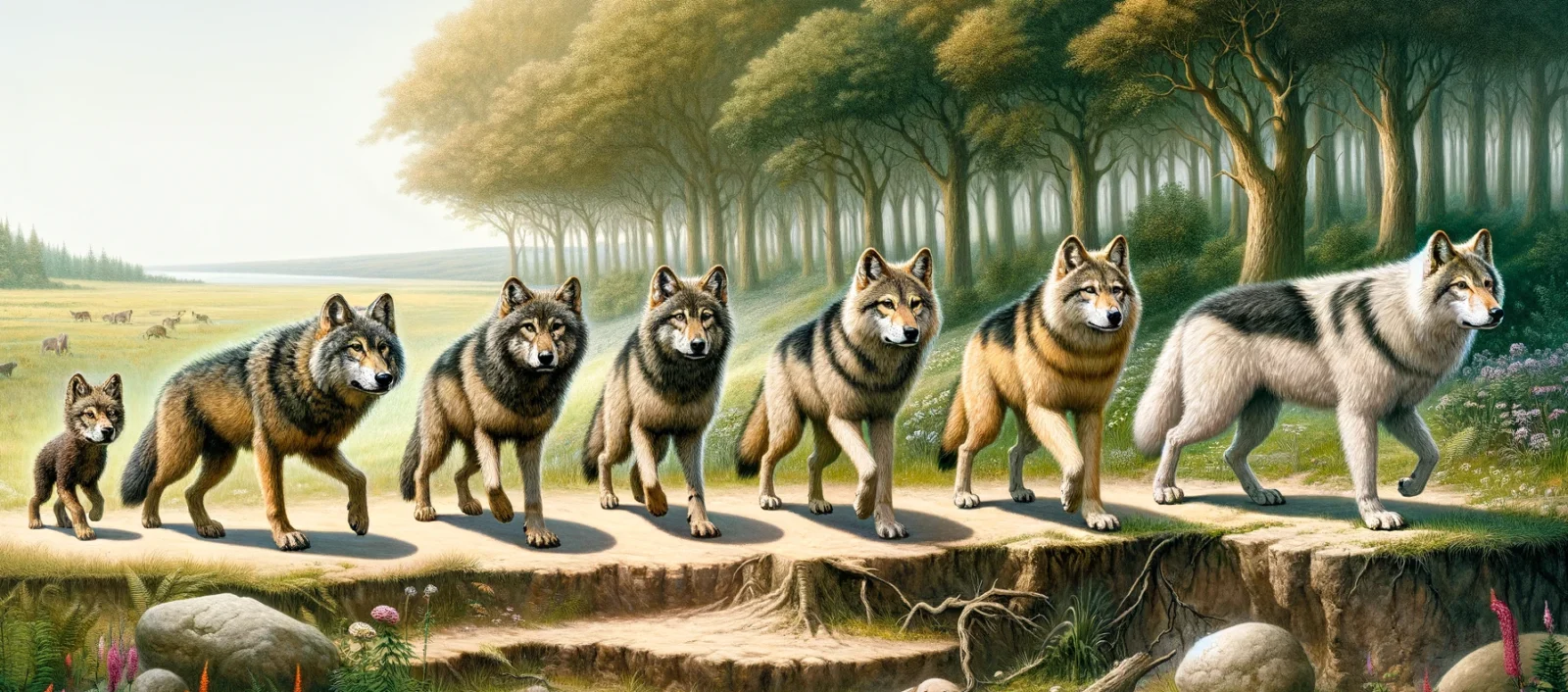
Dogs and wolves share a high degree of genetic similarity due to their recent common ancestry. Genetic studies have shown that all dogs are descendants from an ancient gray wolf population, and they are more closely related to each other than to any existing wolf population. They are the same species because they can interbreed, producing viable offspring known as wolf-dog hybrids.
Dogs are a good example of evolution at work. Dogs have been bred for various traits that facilitate living alongside humans, including a more docile nature and an ability to understand and respond to human commands. Physically, dogs vary widely in size, shape, and coat type, much more so than wolves, due to selective breeding by humans. From a taxonomic perspective, the dogs are a subspecies of wolves because dogs and wolves can interbreed and produce fertile offspring, a key criterion for species classification under biological definitions. While wolf-dog hybrids are generally fertile, there may be subtle genetic differences that can sometimes affect their overall fertility. For example, hybrids may experience slight variations in reproductive cycle timing or fertility issues.
The old question of “nature versus nurture” is real and intertwining. The fact is that the physical brain is complex and 100% built by genetics. Research has shown that certain social behaviors, like aggression, fear, and dominance, are genetic. While the genes responsible for these traits are mostly the same, most of the time, they do vary. Those variations show up in traits such as aggression, fear, and dominance. While there is a genetic component that builds the physical brain, environment plays a part too. As stated, brains are complex with many of its traits influenced by environment. While dogs and wolves have genetic tendencies regarding aggression, fear, and dominance, those traits are heavily influenced by the environment, by their upbringing.
The case of dogs and wolves underscores the complex interplay between genetics and environment. A key point in Darwin’s evolution is the subtle adaptation of species to new environments over many generations. When does a species evolve into a subspecies? And, when does that subspecies evolve into a new species? When animals can breed with high success rate, it’s clear they are the same species. When they can’t breed at all, it’s clear they are not. In between, as species go through the subspecies process, it’s less clear.
This case study echoes the broader discussions in paleoanthropology about our own history with Neanderthals. Just as the lines between different breeds of dogs and wolves blur through interbreeding and shared traits, so too do the distinctions between modern humans and Neanderthals become less clear under genetic scrutiny. Before we tackle the human-neanderthal debate head on, let’s explore a case study where we observe one species evolving into another.
Case Study 2: Observed Speciation
We have observed speciation in both the fossil record and in living examples. First, let’s use horses and donkeys to demonstrate the plethora of examples we read in the pages of the fossil record. A specific species, in the genus Hyracotherium, from 50 million years ago evolved into two new species: horses, donkeys, and zebras.
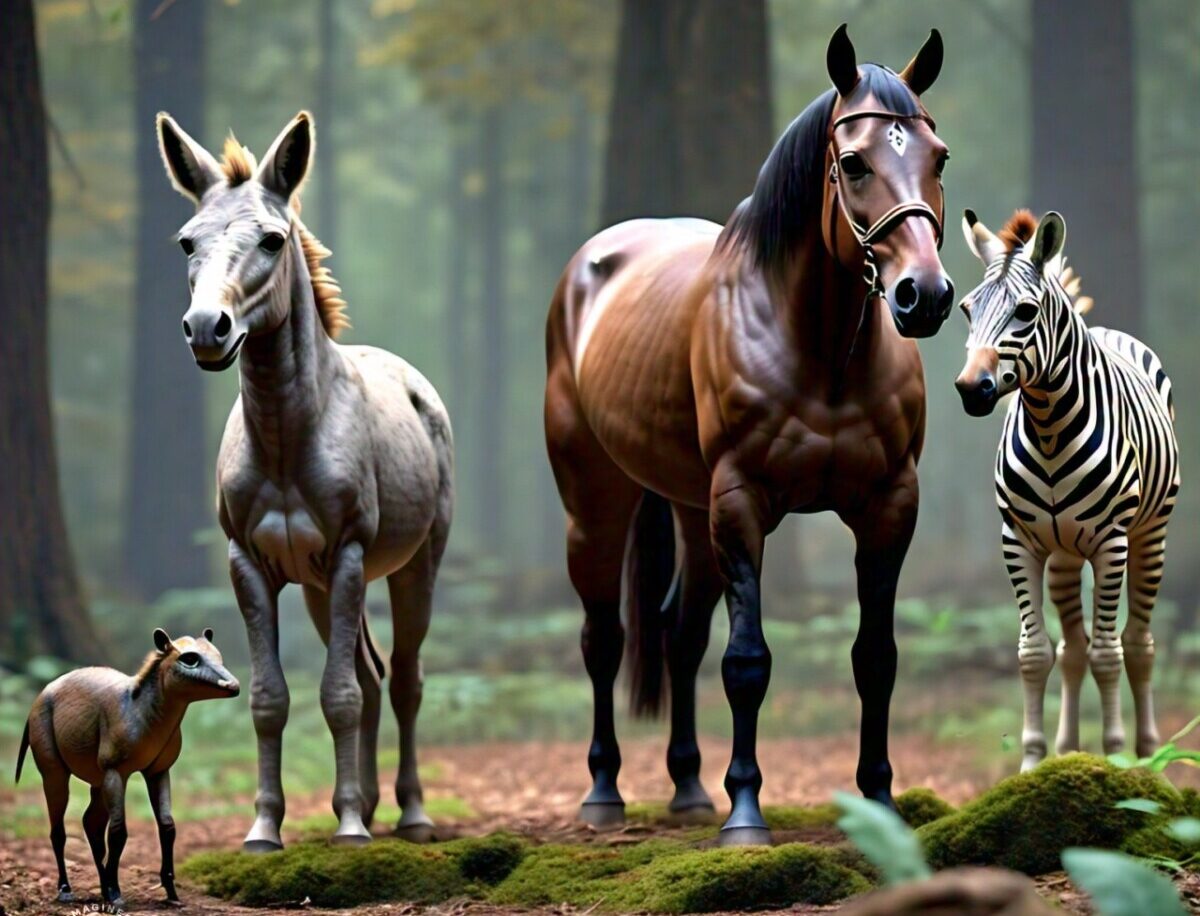
Progression from Hyracotherium to the modern donkey, and zebra.
Despite their ability to interbreed and produce offspring (mules), the offspring are sterile and cannot produce fertile offspring of their own, meeting our definition of species. Additionally, the difference in chromosome numbers (31 pairs in donkeys and 32 in horses) highlights their reproductive isolation. This example from the fossil record illustrates the process of speciation, where two species evolve from a common ancestor but become reproductively isolated and distinct. In addition to observing speciation in the fossil record, we can also see it in action in living populations.
Second, let’s show speciation from one named species to another. This tale begins with a specific barley species or perhaps another related “cereal” species. Thousands of years ago, a species broke off that forged a set of species collectively known as the Triticum genus. One of these species, the “ancient wheat,” known as Triticum urartu, still grows in the cradle of civilization region, in areas ranging from Western Asia to Syria. This “ancient wheat” is the ancestor to “modern wheat,” known as Triticum aestivum. While ancient wheat has 7 pairs of chromosomes, modern wheat has 21. Ancient wheat is a diploid ancestor of modern wheat which is a hexaploid species. This significant increase in chromosome pairs is the result of multiple hybridizations and chromosomal doubling from its ancestors, leading to a highly versatile and productive crop. It is a completely new species by every definition. In defending the Theory of Evolution, this speciation event is particularly significant because it illustrates how human intervention in natural processes can accelerate and even direct the course of evolutionary change. Where would the world be without the selective breeding of our favorite carbs: rice and wheat. I love both, but thanks to our directed evolution, the smell and taste of freshly baked sourdough bread is heaven on Earth.
Finally, let’s honor Charles Darwin’s legacy by explaining what he saw in living finches on the Galapagos Islands nearly two centuries ago. During his visit in 1835, Darwin collected several finch species, which later became a crucial part of his theory of evolution. Among these finches, some species have evolved to the point of reproductive isolation, exemplified by Geospiza fuliginosa and Geospiza difficilis.
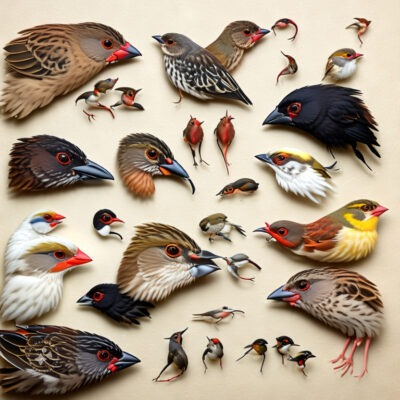
These two species, once capable of interbreeding, are now distinct and reproductively isolated. This example, like our horse-donkey example, illuminates the pages of the fossil record. On this page of the book, the story of a few birds from a few million years ago is told These birds flew over to the islands for the last time. Their islands were now just a bit too far from the mainland, they settled in for the duration. As time rolled on, the islands spread apart and getting from island to island was challenging. As the thousands of years rolled by, subtle changes showed up. Just like some humans have blue eyes and brown hair while others have brown eyes and blonde hair, these descendants gradually changed. As the tens of thousands of years turned into the millions, the finches of the Galapagos Islands evolved from a single species into 18 types of birds representing anywhere from 13 to 18 species and subspecies, depending on your definitions. While most of these birds can interbreed with several others, the boundaries between species are blurry, and the ability to interbreed is complex and overlapping, highlighting the dynamic nature of evolution.
Case Study 3: Neanderthal, Denisovan, and Sapiens
Now let’s bring this home to ourselves and explore the fascinating debate around whether Neanderthals, Denisovans, and Sapiens are actually separate species or subspecies. This inquiry is particularly compelling because we know that all three groups could, at various points in their history, interbreed to some extent.
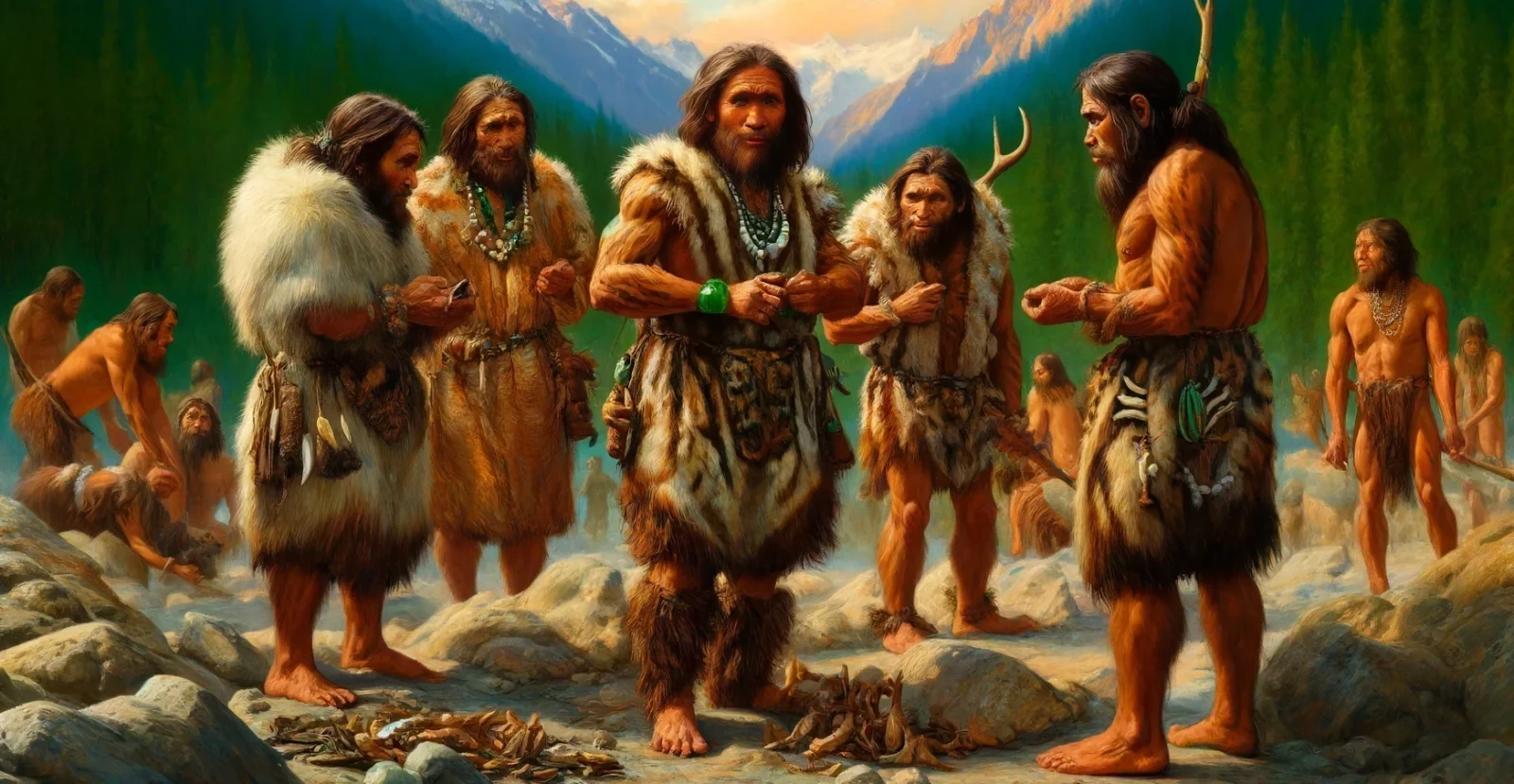
When it comes to defining species and subspecies, a key aspect is reproductive isolation: the inability of individuals from two populations to produce viable, fertile offspring due to genetic, behavioral, or geographical barriers. This criterion, while helpful, can become blurred in cases where interbreeding is possible but infrequent, as it has been with Neanderthals, Denisovans, and modern humans. The genetic legacy of these interspecies interactions is still evident today, with segments of Neanderthal and Denisovan DNA present in many modern human genomes.
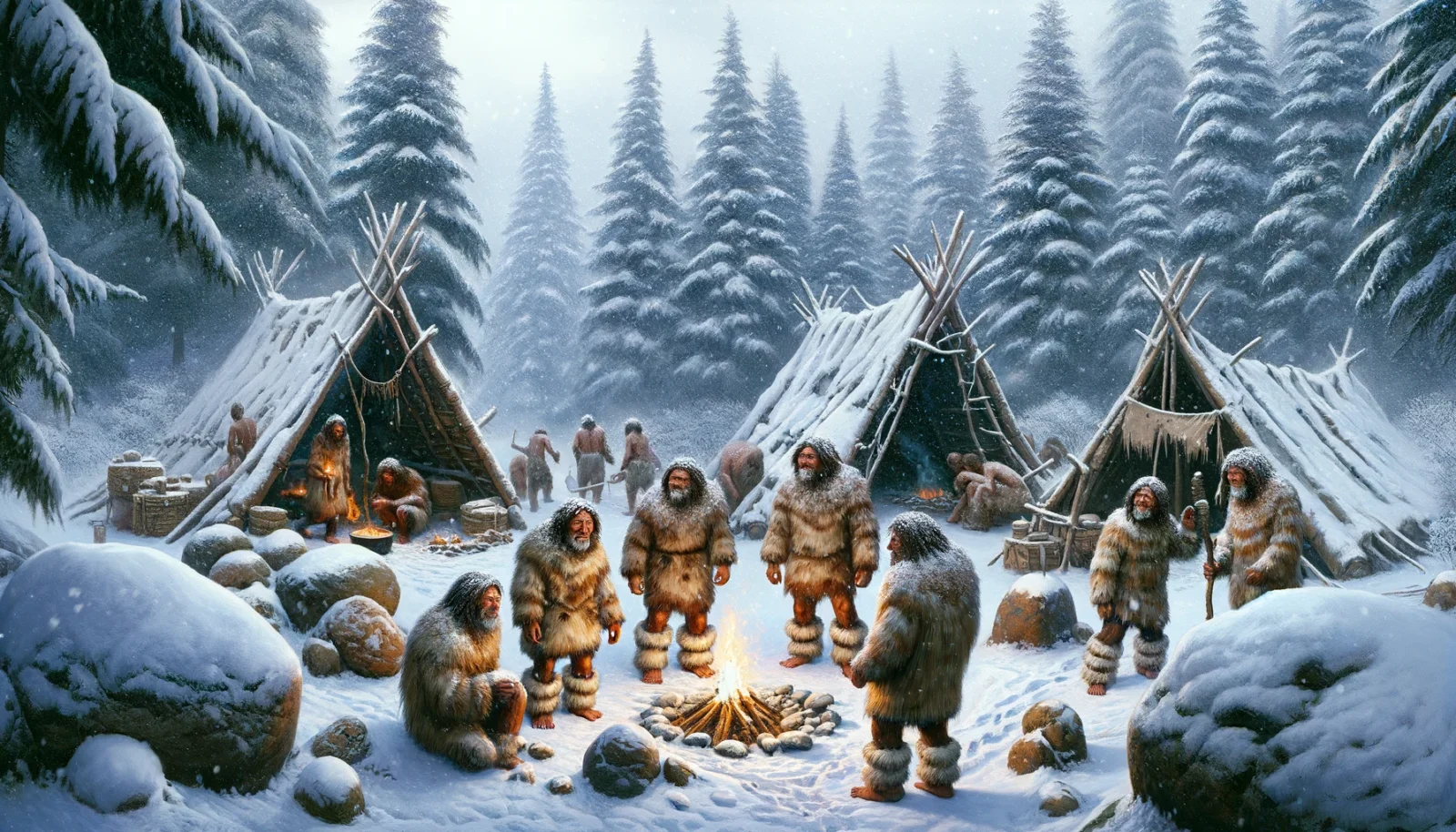
Such findings pose challenges to the traditional species concept, which would classify populations as separate species if they do not regularly interbreed in nature. The human-Neanderthal-Denisovan narrative reveals a more complex scenario, where distinct populations with unique evolutionary histories and adaptations have indeed interbred, blurring the lines between species and subspecies. It leads us to reconsider the rigid boundaries we often place around the concept of a species, acknowledging instead the fluidity of genetic exchange and the role it has played in our own ancestry.
The implications extend beyond taxonomy and into our understanding of human evolution, as these genetic exchanges have undoubtedly contributed to the diversity and adaptability of Homo sapiens. It highlights the ongoing dialogue between our genetic past and present, and the realization that our species has always been part of a rich tapestry of hominin diversity.
Brain Size vs. Brain Power Debate
In the unfolding saga of human history, the tale of Neanderthal intelligence has been a battleground not just of facts, but of perceptions. For decades, the larger brains of Neanderthals whispered promises of untold cognitive abilities, a potential for intelligence that seemed to rival, even surpass, our own. Yet, the heart of the matter lay not in the size of these ancient brains but in the intricate web of neural connections they housed. The story was not about volume but about the efficiency and complexity of the brain’s neural networks.
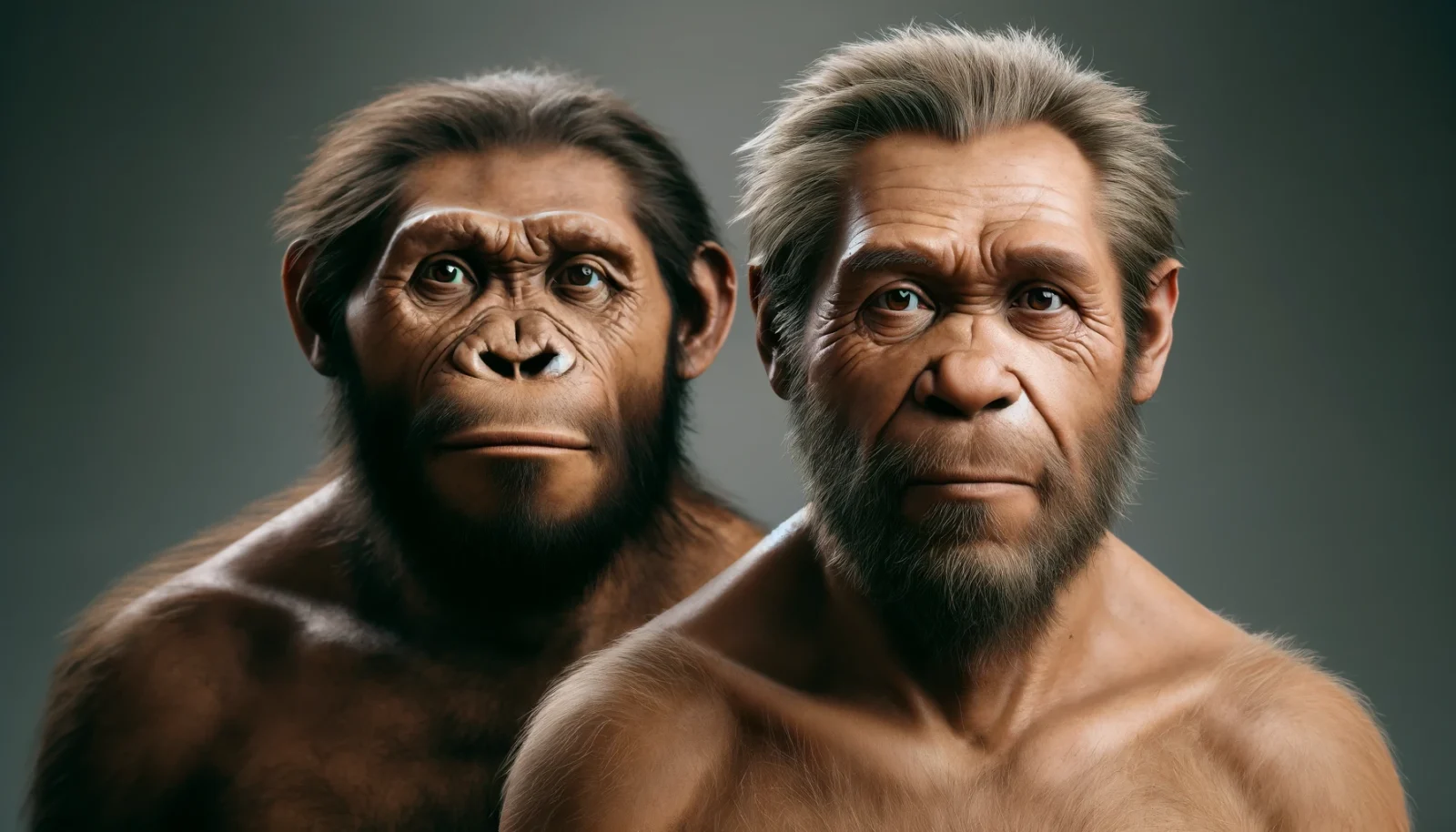
Enter the Encephalization Quotient (EQ), a scientific attempt to chart the murky waters between brain size and intelligence. This tool, as ingenious as it was, could only skim the surface, offering a glimpse into the potential intellect of our long-lost cousins. It hinted at a correlation, a way to measure the minds of beings long vanished, yet it stumbled, caught in its own limitations. For what is intelligence if reduced merely to a ratio, a number? The essence of thought, of creativity, of the spark that fuels innovation, lies not in the mass of the brain but in the connections that pulse within it.
As we delved deeper, the narrative began to shift. The debate over brain size versus brain power took on new dimensions, revealing that the story we thought we knew — of Neanderthals as the brutish, less intelligent foils to our sophisticated ancestors — needed rewriting. This was not just about correcting a scientific oversight; it was about challenging a deeply ingrained bias, the notion of human exceptionalism that had colored our view of the past.
This realization marked a turning point, a moment of introspection for the scientific community and society at large. It became clear that assessing Neanderthal cognition required a more nuanced approach, one that looked beyond crude measurements and took into account the rich tapestry of brain organization, connectivity, and the diverse expressions of intelligence.
As the narrative of Neanderthal intelligence unfolds, it tells a broader story, one of scientific humility and the ongoing quest to understand our place in the grand tapestry of life. It reminds us that intelligence, in all its forms, is a story of adaptation and survival, a multifaceted phenomenon that cannot be captured by simple metrics. In the end, the journey to comprehend Neanderthal mind is not just about them; it’s a mirror reflecting our own biases, our capacity for change, and our endless fascination with what it means to be truly intelligent.
Re-evaluating Neanderthal Intelligence
When it comes to brain size and cognitive abilities, there is much to discuss and explore. The large brain of Neanderthals, averaging between 1,200 to 1,750 cubic centimeters, has long intrigued scientists. This size, often larger than that of modern humans, suggests a capacity for complex thought and sophisticated cognitive abilities. However, the true measure of intelligence extends beyond mere volume. The Encephalization Quotient (EQ), while useful, offers a simplistic view, failing to account for the intricate wiring and functional organization of the brain. It’s this neural architecture, rather than size alone, that underpins advanced cognitive processes. Thus, while Neanderthals’ brain size is indicative of high potential intelligence, EQ alone cannot fully capture their cognitive capabilities.
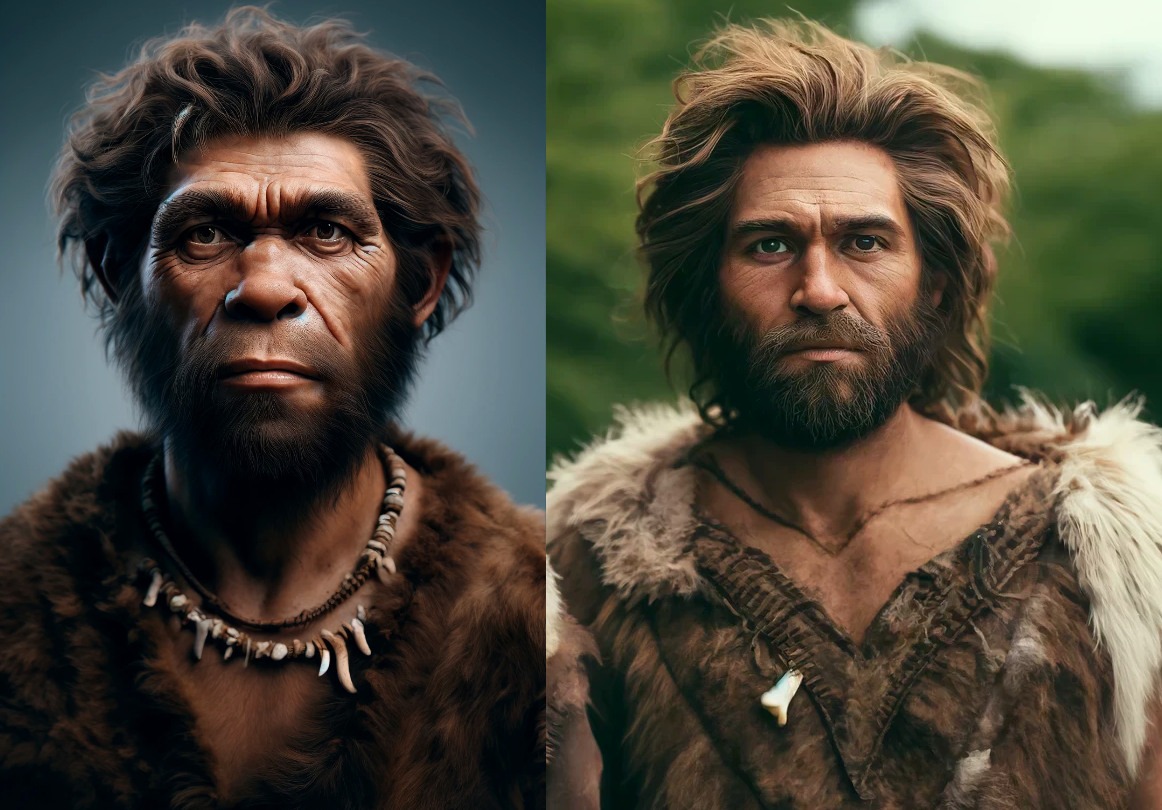
Exploring the Neanderthal Mind
The evidence for Neanderthal intelligence is compelling, spanning from the crafting of sophisticated tools to evidence of social behavior and strategic environmental adaptations. Their toolkits were not merely functional but optimized for specific tasks, indicating foresight and planning. Social structures are inferred from the care given to the injured and elderly, suggesting a community bond strengthened by empathy and cooperation.
Moreover, adaptations to diverse and often harsh environments showcase a resilient and resourceful intelligence, tailored to the specific challenges of Ice Age Europe. The possibility of specialized intelligence, honed for survival in such conditions, highlights the danger of underestimating Neanderthal cognitive abilities based on comparisons to modern human standards. Their intelligence was undoubtedly different but no less sophisticated, adapted perfectly to their way of life and the world they inhabited.
In reassessing Neanderthal intelligence, we are forced to confront our biases and reconsider what constitutes intelligence in the broader context of human evolution. The emerging picture is one of a species far more similar to us than previously believed, capable of complex thought, communication, and deep emotional connections.
Beyond Brain Size: The Complexity of Neanderthal Life
The life of Neanderthals was far from the brutish existence once imagined. Recent research into their social structures, survival strategies, and interactions with Homo sapiens paints a picture of a sophisticated, adaptable species, capable of complex behaviors that challenge previous stereotypes.
The use of ochre by Neanderthals, has been documented, with evidence of ochre use up to 250,000 years ago. This further suggests that Neanderthals engaged in symbolic use or other functional applications of ochre, such as for tool making or as a hafting adhesive. The debate around the use of ochre by early humans and Neanderthals includes both symbolic and functional interpretations, indicating a complex relationship with this material.
Social Structures and Cooperation
The evidence of Neanderthal social life and cooperation is compelling, particularly when examining the care provided to injured individuals. Archaeological findings show healed injuries in Neanderthal remains, suggesting that injured members were supported and cared for by their group, indicative of a compassionate social structure. Such patterns of injury healing imply a level of cooperation and communal living that necessitates complex social behaviors and communication.
Adaptation and Survival Strategies
Neanderthals were masters of adaptation, thriving across diverse and often unforgiving landscapes of Ice Age Europe and Asia. The controlled use of fire, not merely for warmth but also for cooking, demonstrates an understanding of its transformative power. Evidence of tailored clothing and constructed shelters further attests to their ability to adapt to the cold climates they often faced. These strategies reflect a deep knowledge of their environment and the ability to innovate and transmit these survival techniques across generations.
Neanderthals and Modern Humans: Interaction and Interbreeding
The relationship between Neanderthals and modern humans is complex, highlighted by genetic evidence of interbreeding. This genetic legacy, found in the DNA of non-African modern humans, suggests not only interactions but also a degree of integration and shared knowledge between the two species. Interbreeding may have facilitated the transfer of beneficial adaptations, such as immune responses to pathogens, which were crucial for early modern humans. The implications for understanding Neanderthal intelligence are profound, suggesting that Neanderthals were not so different from us in their ability to communicate, cooperate, and even form intimate bonds with Homo sapiens.
The complexity of Neanderthal life, evidenced by their social structures, survival strategies, and interactions with modern humans, underscores a level of sophistication that demands a reevaluation of their cognitive abilities. Beyond the mere size of their brains, it is the evidence of their lived experience — their art, the care for their kin, their mastery over their environment, and their interactions with Homo sapiens — that truly reveals the depth of Neanderthal intelligence. This complexity paints a picture of Neanderthals not as the dim counterparts to humans but as a people with a rich cultural heritage and a profound connection to the world around them.
Neanderthal Extinction: A Speculative Summary
The extinction of Neanderthals and the survival of Homo sapiens is a multifaceted historical event that likely involved a complex interplay of ecological, competitive, and social factors. It is plausible that to early Homo sapiens, Neanderthals appeared not as distinctly different beings, but rather as another group of humans, sharing many physical and behavioral traits. Over time, the inherent “us versus them” mentality that can characterize human social dynamics may have exacerbated competition for resources, leading to conflict and contributing to the gradual decline of Neanderthal populations. This scenario would have been further complicated by environmental changes, resource scarcities, and disease, which would have put additional pressures on both communities. Additionally, interbreeding between Homo sapiens and Neanderthals suggests that there were also periods of cooperation and gene flow between the groups. Overall, while it’s possible that competitive tensions played a role in the Neanderthals’ extinction, this was just one of many factors, painting a picture of a nuanced and dynamically shifting relationship between two groups of humans.
Rethinking Our Past, Shaping Our Future
As we journey through the annals of human evolution, the story of the Neanderthals emerges not as a footnote but as a pivotal chapter that challenges our understanding of intelligence, culture, and what it means to be human. The evidence increasingly suggests that Neanderthals possessed a form of intelligence that, while organized differently from ours, was nonetheless complex and nuanced. Their ability to adapt to harsh environments, create art, and engage in sophisticated social behaviors speaks to a cognitive landscape rich in diversity and innovation.
The journey to unravel the mysteries of Neanderthal life underscores the critical value of continued research. Each discovery peels back a layer, revealing insights into the myriad ways different hominin lineages navigated the challenges of their world, achieving evolutionary success through diverse adaptations and innovations. This quest not only challenges old stereotypes but also enriches our understanding of Neanderthal intelligence and culture, painting a more nuanced picture that respects their place in our shared history.
Technological advancements and interdisciplinary research continue to illuminate the depths of our connection to these ancient relatives, offering glimpses into their lives and minds. As we reassess Neanderthal intelligence, we are reminded of the broader spectrum of human cognitive evolution, revealing a story not of linear progression but of a rich mosaic of adaptability and resilience.
Reflecting on the reassessment of Neanderthal intelligence, we gain more than just scientific knowledge; we gain a deeper appreciation for the complexity of “intelligence” itself and the diverse forms it has taken throughout our evolutionary journey. This exploration not only reshapes our understanding of the past but also informs our perspective on the future, encouraging us to embrace the full breadth of human diversity and potential.
For an up close look at human evolution within the genus Homo, check out The Human Evolution Timeline.















